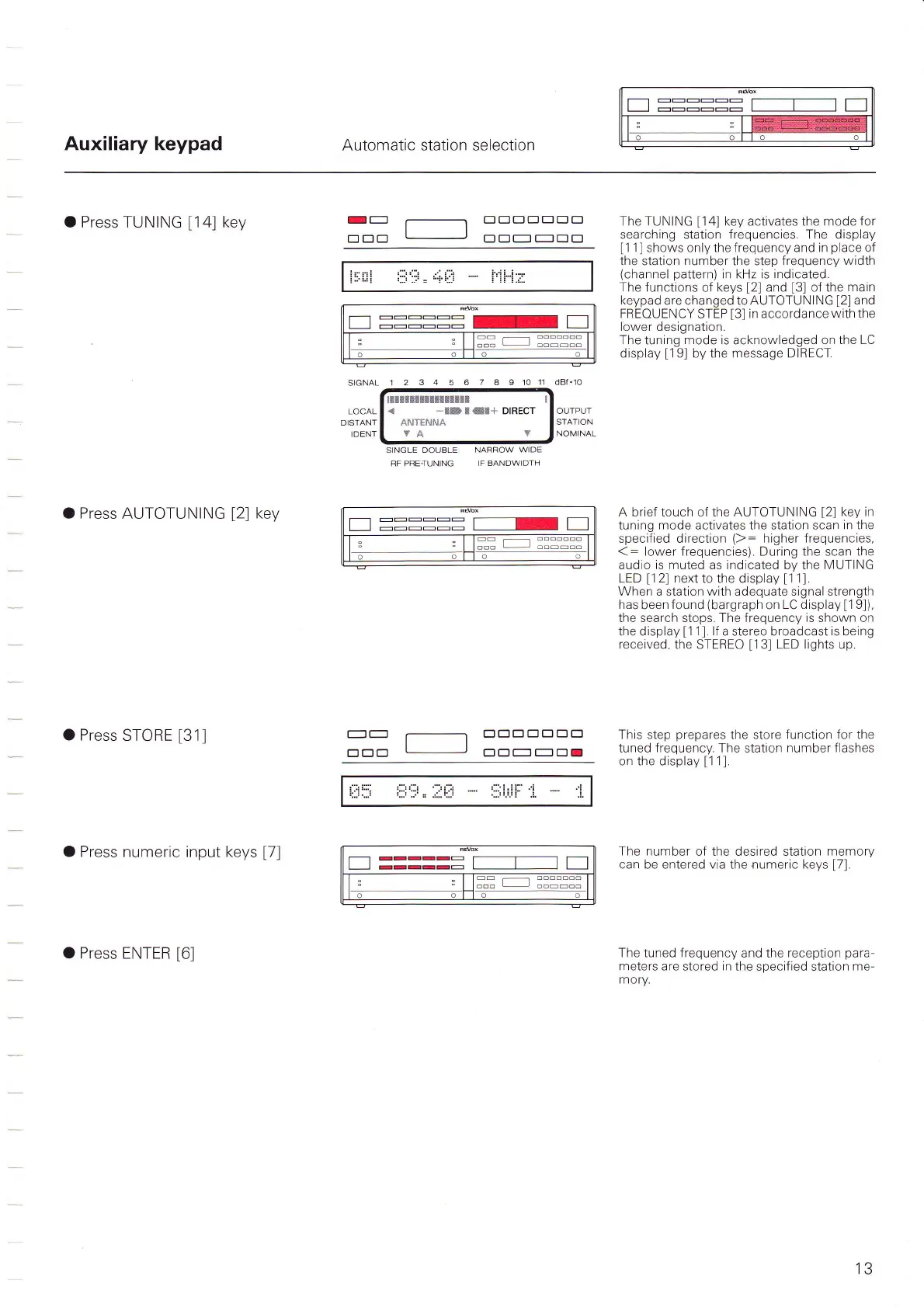tt::::::ttttt
Auxiliary keypad
Automatic station selection
O Press TUNING
[14]
key
O
Press
AUTOTUNING
[2]
key
O Press
STORE
[31]
O Press numeric input keys
[7]
O Press ENTER
16l
IT---] OOOEEEO
tt
E-E OEf---rf----rEE
tr
======
-
E
=I13"7rr::==:=
SIGNAL
1
10
11
,
.{
*XW
g
W*+
DIRECT
Aät?ci{,uA
Yli v
The TUNING
[14]
key
activates
the mode for
searching station frequencies The display
l1
'1
I
shows only the f requency and in
place
of
the station
number
the step
frequency width
(channel pattern)
in kHz is indicated.
The functions
of
keys
[2]
and
l3l
of the main
keypad
are changed toAUTOTUNING
[2]
and
FREOUENCY
STEP
[3]
in accordance
with
the
lower designation.
The tuning
mode is
acknowledged
on the LC
display
[19]
by the message DIRECT
A brief touch of the AUTOTUNING
[2]
key in
tuning
mode
activates
the
station
scan in the
specified direction
():
higher
frequencies,
(:
lower frequencies). During the scan the
audio is muted as indicated by the MUTING
LED
Ii
2] next
to the display
[1
1]
When a station with adequate signal strength
has
beenfound
(bargraph
on
LC display
[19]),
the search stops. The frequency is shown on
the display
[1
1].
lf a stereo broadcast
is
being
received,
the STEREO
[13]
LED lights up
This step
prepares
the store function for the
tuned
frequency.
The station
number flashes
on the display
[1
1].
The number
of the desired station
memory
can be entered via the numeric keys
[7].
The tuned frequency
and the
reception
para-
meters are
stored
in
the specified station
me-
mory.
LOCAL
DlSTANT
IDENT
dBf.10
OUTPUT
STATlON
NOMINAL
E
======
r-----E
n
SINGLE DOUBLE
RF PRE-TUNING
-EE
NARROW
WIDE
1F BANDWIDTH
EEE
EEEE
EEf---1
r----1
El
ll------lllll
-ll--
-tttrtro
13
